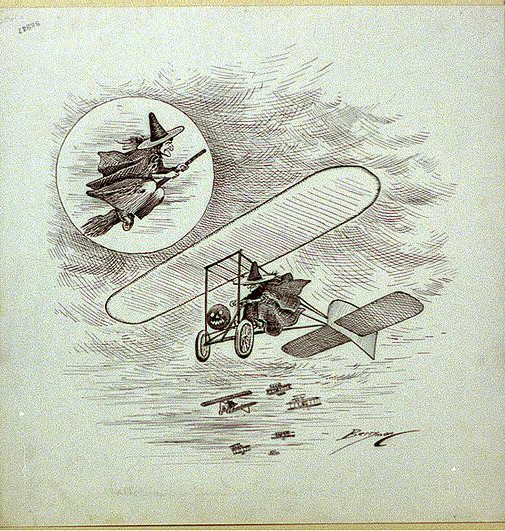
early adopter?
According to the Library of Congress, the above picture was created/published in 1909 or 1910. Since the Wright brothers’ first 59 second flight at Kitty Hawk occurred in December 1903, I’d call that witch an early adopter, at least by my standards. It seems I usually have to drag myself kicking and screaming to use new technology.
One of the mistakes I’ve made in my life was not taking the typing course available in high school. It wasn’t that I was rejecting new technology, I just didn’t think I’d ever need to type. Within a couple years I learned how foolish that idea was as I learned a lot about gobs and gobs of white-out and retyping whole pages or nearly full pages. Everyone makes mistakes, but I probably would have been more efficient if I had taken the typing course.
Besides, typewriters were not exactly new technology at the time. According to an article by Nick Yetto in Smithsonian (September/October 2023 page 34), typewriters first became available in the marketplace about one hundred years before I was in high school. In the late 1860’s Christopher Lathan Sholes and Carlos Glidden, (along with temporarily involved S.W. Soulé) began working on a machine to print numbers and letters on paper in Milwaukee. “The Sholes and Glidden typewriter came to market in 1874, manufactured by E. Remington & Sons, which was then expanding its offerings after a lucrative spell manufacturing firearms for the Union. Sold as the ‘Remington No. 1,’ it became the first commercially successful typewriter and influenced nearly every subsequent design.” That first model featured the QWERTY keyboard, which is still widely used.
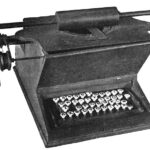
“Sholes And Glidden Machine, 1873.
This Was the Model Shown by Densmore to the Remingtons Which Resulted in the Historic Typewriter Contract “
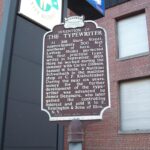
in Milwaukee
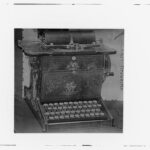
“First Typewriter”
Charles Vonley Oden explains in Evolution of the Typewriter (1917) that inventors had been working on possible typewriters for quite a while. In fact, in 1714 Englishman Henry Mill patented a writing machine but there aren’t any details of how it was engineered. During the first part of the 19th century inventors came up with features that were useful, but none of the machines were practical. In 1868 Sholes, Glidden, and Soulé were granted patent papers that caught the attention of inventor James Densmore, who invested in the company. Soon after this Glidden, and Soulé dropped out of the business. Densmore stressed the importance of testing the machines and seeking feedback from “interested outsiders.” Poor manufacturing facilities resulted in very crude machines. Around 1870 G.W.N. Yost became involved with the project. He stressed the importance of skilled manufacturing if the typewriter would ever be profitable. Their group sought and received the attention of the Remington company, which was well-known as a skilled manufacturer of firearms during the Civil War. Remington contracted to make 1,000 Sholes & Glidden typewriters. Remington “later secured control of the machine” and named it ‘Remington.'”
Mr. Oden goes on to write that in 1874 the Remington No. 1 was put in the marketplace. Although 400 were sold, many were returned “not only on account of imperfections they developed, but because the business world had not yet given the typewriter serious consideration.” “A typewritten letter often offended the recipient, who seemed to feel it was a reflection upon his intelligence and ability to read pen writing.” Efforts were made to popularize the typewriter including a “sham battle” between inventors to increase public consciousness of the machine. The sales agents also placed the typewriters with prominent firms and individuals, who were taught how to use the machines and try them out. The sales agents publicized endorsements from those who had been using the typewriters. For example, in March 1875 Mark Twain wrote something like an anti-endorsement – recipients of his typewritten letters always wrote back asking for details about the “curiosity-breeding little joker” he owned. In 1882 the firm Wyckoff, Seamans, & Benedict was formed for the purpose of selling the Remington typewriters. In 1886 the Remington company sold its typewriter business to the sales firm. “Thus the typewriter became an independent enterprise and its success assured.”
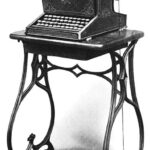
“THE FIRST COMMERCIAL TYPEWRITER
Model 1 Remington, Shop No. 1. “
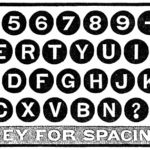
“Keyboard Diagram—From the First Typewriter Catalogue”
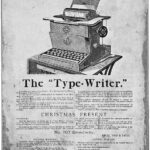
“One of the Earliest Typewriter Advertisements.”
At Robert Messenger’s ozTypewriter you can read a whole lot about typewriters. A post about Jefferson Moody Clough, The Unsung “Typewriter Maker of Ilion,” “the man who deserves as much credit as anyone for the successful launch of the typewriter on July 1, 1874. It was under Clough’s supervision that E. Remington & Sons of Ilion, New York, was able to mass produce a marketable machine from the crudely-made early versions of the Sholes & Glidden.” As I’ve been learning about typewriters “collaboration” is a word that comes to mind. For example, in The Story of the Typewriter, 1873-1923, by the Herkimer County Historical Society, William K. Jenne is identified as another important at the Remington factory: “But the most notable personage among these men was William K. Jenne, and at this time the mantle passes from Sholes to Jenne, who became for many years the central figure in the history of the development of the typewriter on its mechanical side.”
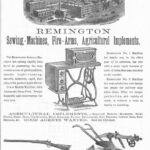
Harper’s Weekly October 24, 1874
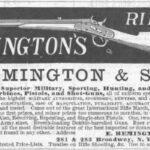
Harper’s Weekly June 26, 1875
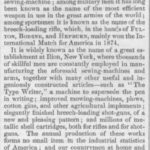
Harper’s Weekly August 14, 1875
According to Consider the Source New York, “Remington’s [Civil] war contracts resulted in the production of 250,000 rifles, carbines, and revolvers. This rivaled Colt’s Patent Fire Arms Manufacturing Company factory for the most arms produced for the Union war effort. However, when the fighting ended in 1865, so did the government contracts.” Remington’s sewing machine business influenced the design of the first typewriter.
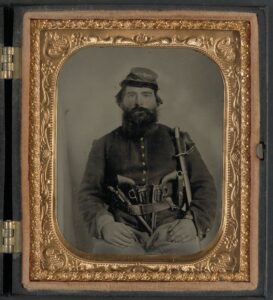
three Remington revolvers
You can read a blog post by Ellen Terrell about “that almost sentient mechanism” at the Library of Congress. Another informative blog is Type-Writer.org.
From the Library of Congress: Halloween ancient and modern from 1909 or 1910; Charles Vonley Oden’s Evolution of the Typewriter, 1917, the information above comes from page 8 and pages 19-26; First typewriter, between ca. 1915 and ca. 1920, the image does pretty much resemble the typewriter in the Smithsonian article; Union cavalryman A. J. Blue with the Remington revolvers.
I got volume 19 of Harper’s Weekly (1875) from HathiTrust. The 1874 Harper’s Weekly is also from HathiTrust here. From Project Gutenberg: Herkimer County Historical Society’s The Story of the Typewriter, 1873-1923, 1923, this includes the images of the 1873 machine, the first commercial model, the keyboard, and the advertisement- the ad sells the typewriter as a way for poor women to get good paying job, the book has much more information about Mark Twain’s adoption of the typewriter; the image of the kids with their Jack-o’-lanterns comes from 1919’s The Book of Hallowe’en by Ruth Edna Kelley (page 178)
From Wikipedia: Copyright © 2005 Sulfur’s photo of the Milwaukee County historical marker, which is licensed under the Creative Commons Attribution-Share Alike 3.0 Unported license – no changes made; the Sholes and Glidden typewriter‘ E. Remington and Sons
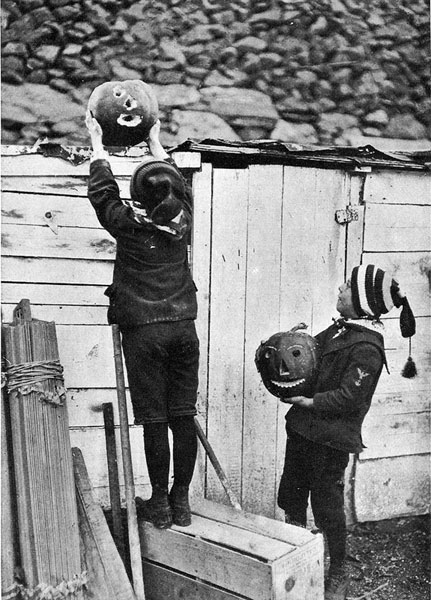
simpler technology












